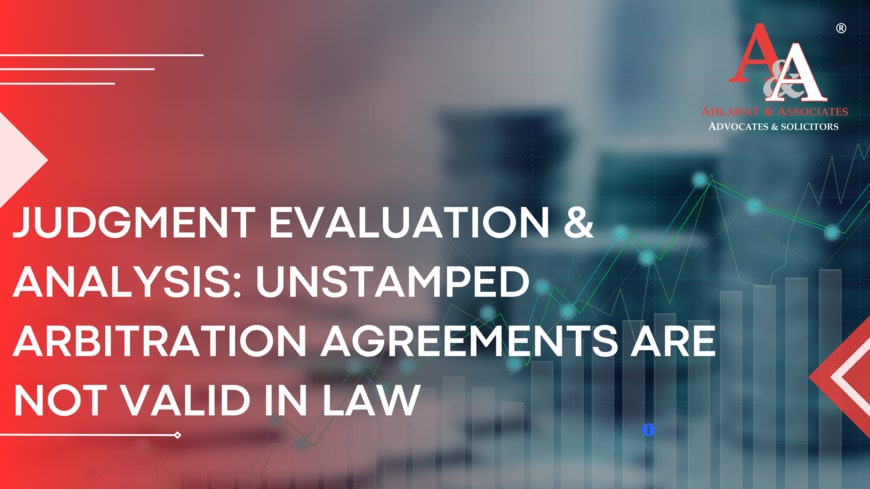
 Nishant Rewalia , Yashodhra Singh
Nishant Rewalia , Yashodhra Singh
 January 5, 2024
January 5, 2024
Interim
measures in civil litigation refer to temporary legal remedies that a court can
order to preserve the rights of parties during the course of a legal
proceeding. These measures include injunctions, attachment, etc. that aim to
prevent irreparable harm or loss to the parties before the final resolution of
a case. The Civil Procedure Code, 1908 (“CPC”) provides for these interim
measures in various stages of civil litigation, but the effectiveness of these
measures remains a matter of debate.
Black’s
Law Dictionary defines “Interim” as “in the meantime; meanwhile”. Accordingly,
interim or interlocutory orders are orders made by a court while a lawsuit is
pending but before the parties actual rights and obligations with regard to the
case's subject matter have been determined. “The court may issue interlocutory
orders that it deems to be just and practical after the plaintiff files a suit
and before it is ultimately resolved.”[1]
They are created either for the aim of protecting the lawsuit's subject matter
or to aid the parties in the case's prosecution. For example, if the lawsuit
involves the demolition of a building, an interim order may be made to halt the
work and maintain status quo until a final decision is made regarding
the property.
Since
courts are set up to administer justice, they should have all the authority
necessary to right the wrongs and prevent future ones while doing so. Between
the start of the proceedings and the decision at hand, interim orders are
required to deal with issues and safeguard the parties’ rights. They give the
court the ability to dispense any relief or issue any orders that may be
required, just, or equitable. Additionally, they stop any abuse of the legal
system while the case is pending.
“The Latin proverb Actus curiae neminem gravabit—which translates to “an act of the court shall prejudice no one” [2]—best explains the justification for such court decrees. Therefore, the court may issue an interim injunction to guarantee that none of the parties interests are compromised. “The Court's directive largely determines the type of the order, and on this basis, they may be categorised as follows:
Section
151 of the CPC lists the inherent powers of the courts, which the court may
utilise to uphold the rule of law and avoid misuse of the legal system.[4]
Courts have the authority to issue temporary orders with the primary goal of
preventing injustice to the innocent. The Supreme Court's interest in
protecting justice is demonstrated by the fact that no organ has the authority
to ignore the provisions of Section 151 of the Code due to a superior role or
procedure. “In order to prevent any abuse of the court system or process, the
court may use its inherent powers to grant interim orders.”[5]
The purpose of the court is to uphold justice, and one aspect of this can be
observed in the way the court issues temporary orders.
An
"injunction" is a legal remedy that forbids somebody from carrying
out a specific action or orders them to make right some wrong or harm. It is
known as a restrictive injunction in the first instance and an obligatory
injunction in the second. Injunctions can be either permanent (i.e., those
determining and concluding the rights of the parties in a case) or temporary,
interim, or interlocutory (i.e., orders until the hearing of an action or
additional orders).
Sections
94 and 95, as well as Orders XXXVIII and
XXXIX, of the CPC regulate injunctions in the CPC.[6]
According to Sections 94 and 95 of the CPC, rules must be developed and imposed
under Order XXXIX in order for a court to order injunctive relief in a
particular situation.[7]
“Ex parte ad interim and permanent injunctions”[8]
are covered by Order XXXIX Rules (1) and (2), whereas interim measures which
could either be interim injunctions or not are covered by Order XXXVIII,
particularly under its Rule 5.
As per
Order XXXVIII Rule 5 of the CPC, “a person seeking such relief must satisfy
three parameters - a prima facie case, balance of convenience, and imminent
prospect of permanent harm or injury.”[9]
The decision or the entire court process would be considered void if the relief
requested under Order 38 Rule 5 is not granted.[10]
In certain extraordinary circumstances, the court requires the opposing party
to keep particular assets or to provide security. “This is done to ensure that
once a decree is passed, it is properly monetised and does not remain a paper
decree.” [11]
This can
occur if the party against whom the injunction was issued has alienated his
property. The courts must also guarantee that such a remedy does not result in
the creation of an unsecured debt. “Ex parte interim remedy” is the focus
of Order 39(1) and (2)[12].
Ex parte ad interim remedy is when a temporary injunction is required so
that the opposing party is not alerted. This can happen if the person, against
whom the injunction was filed has alienated their property. Additionally, the
courts must ensure that this remedy won't lead to an occurrence of unsecured
debt. Proviso to Order XXXIX Rule 3 clearly states that in these circumstances,
the reasons must be mentioned.[13]
The court must take into account the plaintiff's conduct, the plaintiff's prima
facie averments, and whether the same are supported by documents on record in
addition to the three parameters that serve as the foundation for injunctions,
such as whether the plaintiff approached the court within a reasonable time
etc. When all of these arguments are considered, a judge will decide whether to
grant or refuse such relief. After getting ex parte relief, the Plaintiff is
required to deliver a copy of the plaint and all other papers filed in the case
as well as quick notice to the opposing party that an ex parte
injunction has been granted against that party.
From the
discussion it can be ascertained that a temporary measure used to maintain the
status quo is an injunction. Its objective is to prevent the dissolution of the
plaintiff's rights. The key justification for requesting a temporary injunction
is that such applicant requires immediate relief. According to Section 94(c)
and (e) of the CPC, the Court may issue a temporary injunction or any other
interlocutory order that, in the Court's opinion, is reasonable and convenient
to prevent the goals of justice from being defeated. According to Section 95 of
the CPC, the Court may grant reasonable compensation on the defendant's
application up to the extent of the Court's pecuniary jurisdiction if a
temporary injunction is granted. Additionally, the court has the power to
impose a temporary injunction at it's discretion. However, this discretion
should be exercised with care, wisdom, and respect for solid legal principles.
Given that they have a negative effect on the other party, injunctions
shouldn't be granted recklessly. An injunction is an equitable remedy, and the
court has the authority to set any conditions and restrictions it sees fit.
However, such limitations must be reasonable so as not to prevent the party
from complying with them and denying him the relief to which he would otherwise
be entitled.
Section 51
of CPC lays down the modes of execution of a decree and attachment of property
is one of them. An attachment is an official process provided in Order 38 of
the CPC whereby a court can seize and keep a defendant's property as security
for a pending litigation in the context of the CPC. A judgement or order that
has been issued or is expected to be issued in favour of the Plaintiff can be
enforced through attachment. A variety of assets, including movable and
immovable property, bank accounts, stocks, and other assets, may be attached.
Depending on the facts of the case, the court may order attachment before or
following the judgement. An attachment of property prior to judgement delivery
is an extraordinary remedy that needs to be used with extreme care and
attention. Even before a judgement is rendered against the defendant, such an
attachment stops him from using his property. Therefore, before taking such
harsh measures, the court must be convinced that the defendant will hinder or
delay the decree's execution if such action is not taken.
The court
must be convinced that the following requirements have been met before issuing
an order of property attachment: (i) the defendant is about to dispose of the
entirety of his property; and (ii) such disposition is done with the intent of
preventing or delaying the execution of any judgement that may be rendered
against him.
Between
the commencement of proceedings and the conclusion, interim orders are required
to deal with issues and safeguard the parties' rights. They give the court the
ability to dispense any relief or issue any orders that may be required, just,
or equitable. Additionally, they stop any abuse of the legal system while the
case is pending. Therefore, interim or interlocutory proceedings are very
important in how the litigation between the parties is conducted. On the basis
of preliminary, prima facie evidence, an interim order is made. Such an order
is made as a temporary measure to maintain the status quo until the subject is
fully adjudicated, preventing the issue from becoming moot or a fait accompli
prior to the final hearing. The court would provide an interim relief only if
it believed that not doing so would be unfair and go against the court's moral
principles, resulting in injustice during the trial and rendering the court
powerless to ensure justice in the end.
[1] G. Manohara Reddy, Enquiries and
Order in Interlocutory Applications, Temporary Injunctions, Attachment Before
Judgment, Appointment of Commissioners and Receivers (2d ed., Kadapa at
Proddatur, 20XX).
[2] Srivastava, N. (2016, August 23)
Temporary Injunctions in India: Overview and Procedure. iPleaders Blog. https://blog.ipleaders.in/temporary-injunctions-india/
[3] Gupta, V., "Interim
Orders," LawyersClubIndia (May 12, 2008), https://www.lawyersclubindia.com/articles/interim-orders-1756.asp#_ftnref45.
[4] Section 151, Code of Civil
Procedure, 1908 (India).
[5] S. K. Srivastava, The Inherent
Powers of the Court, Legal Services India, https://www.legalservicesindia.com/article/1736/The-Inherent-Powers-of-the-Court.html
[6] Section 94, Code of Civil
Procedure, 1908 (India).
[7] Section 95, Code of Civil
Procedure, 1908 (India).
[8] Code of Civil Procedure, Order
39(1) and (2).
[9]
Gupta, Shreya, Injunction Under CPC: An Overview, TaxGuru, November 5,
2020, https://taxguru.in/corporate-law/injunction-cpc-overview.html.
[10] Code of Civil Procedure, Order 38,
Rule 5.
[11] Gupta, Shreya, Injunction Under
CPC: An Overview, TaxGuru, November 5, 2020, https://taxguru.in/corporate-law/injunction-cpc-overview.html.
[12] Code of Civil Procedure, Order
39(1) and (2).
[13] Code of Civil Procedure, Order 38,
Rule 3.

Bharatiya Nyaya Sanhita has done away with the “General Explanation” clauses as contained in Sections 8 to 52A of Chapter II of IPC. All these Sections contained definitions as there was no definition clause in IPC.
View More
A 5- Judge Bench of Supreme Court in its judgement dated 25th April 2023 by a 3:2 majority held that “an instrument which is exigible to
View More
Death being the ultimate unknown and finality with no scope of return, we humans more often than not, would like to leave behind at
View More















 Cookies Consent
Cookies ConsentWe use cookies to help you navigate efficiently and perform certain functions. You will find detailed information about all cookies under each consent category below. Read more...
 Cookies Consent
Cookies ConsentWe use cookies to help you navigate efficiently and perform certain functions. You will find detailed information about all cookies under each consent category below. Read more...


Comments
Post A Comment
Your email address will not be published *